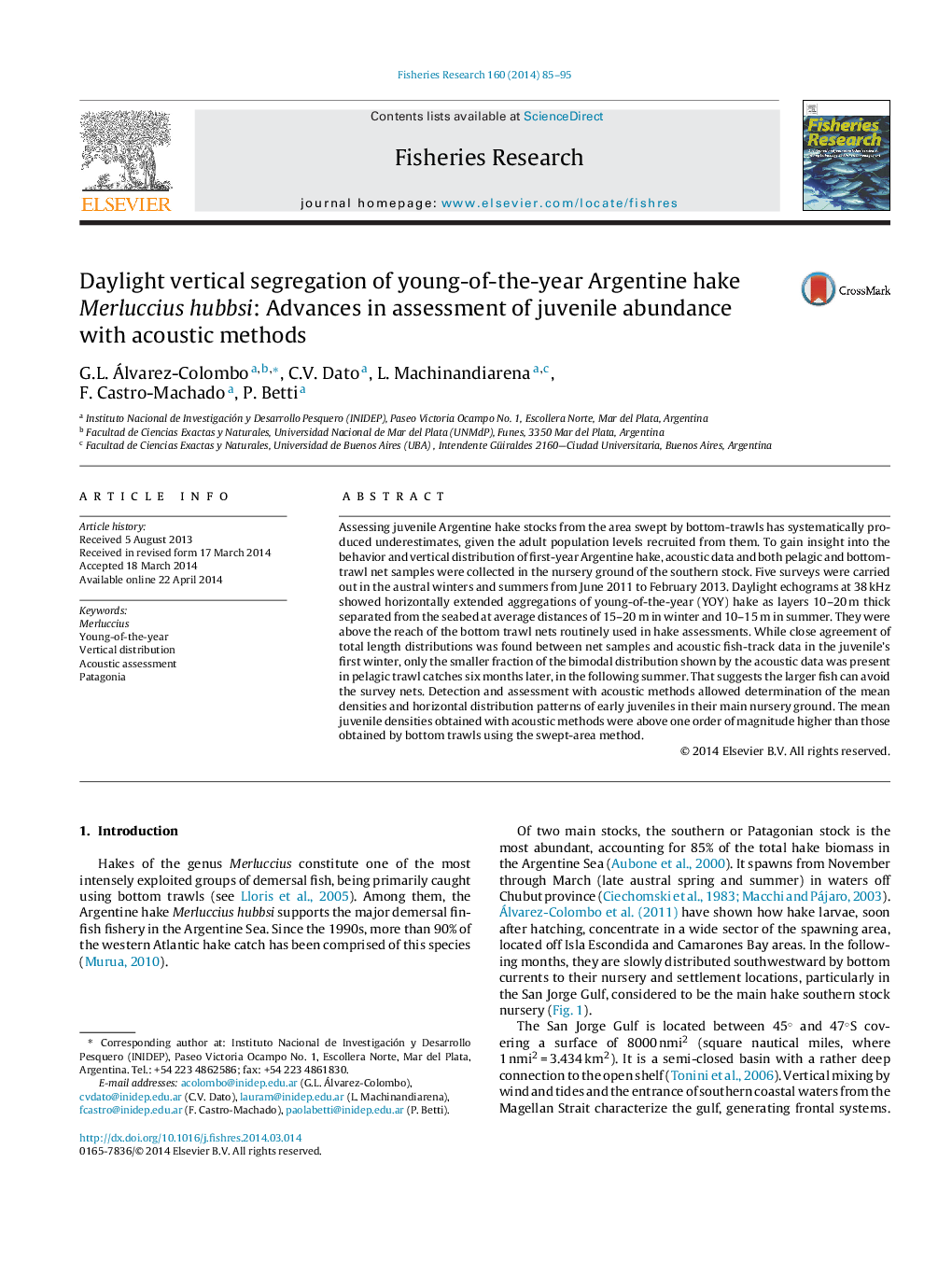| Article ID | Journal | Published Year | Pages | File Type |
|---|---|---|---|---|
| 4542875 | Fisheries Research | 2014 | 11 Pages |
Assessing juvenile Argentine hake stocks from the area swept by bottom-trawls has systematically produced underestimates, given the adult population levels recruited from them. To gain insight into the behavior and vertical distribution of first-year Argentine hake, acoustic data and both pelagic and bottom-trawl net samples were collected in the nursery ground of the southern stock. Five surveys were carried out in the austral winters and summers from June 2011 to February 2013. Daylight echograms at 38 kHz showed horizontally extended aggregations of young-of-the-year (YOY) hake as layers 10–20 m thick separated from the seabed at average distances of 15–20 m in winter and 10–15 m in summer. They were above the reach of the bottom trawl nets routinely used in hake assessments. While close agreement of total length distributions was found between net samples and acoustic fish-track data in the juvenile's first winter, only the smaller fraction of the bimodal distribution shown by the acoustic data was present in pelagic trawl catches six months later, in the following summer. That suggests the larger fish can avoid the survey nets. Detection and assessment with acoustic methods allowed determination of the mean densities and horizontal distribution patterns of early juveniles in their main nursery ground. The mean juvenile densities obtained with acoustic methods were above one order of magnitude higher than those obtained by bottom trawls using the swept-area method.
